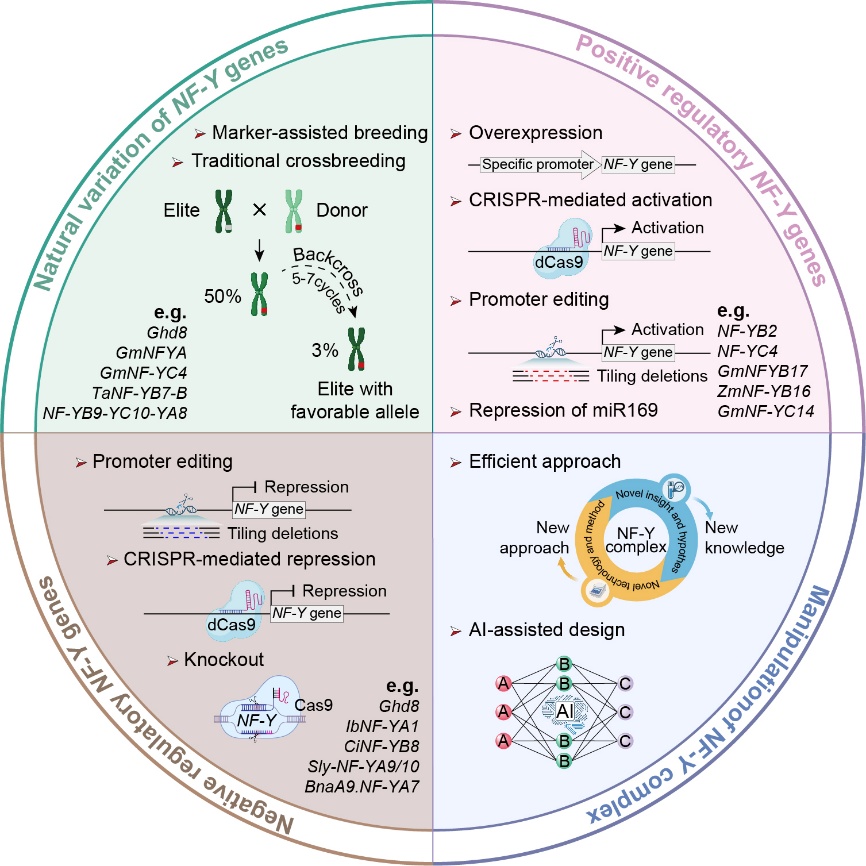Nuclear factor-Y transcription factors in crops: Biological roles, regulation, and breeding applications
A research team from the Restoration Ecology Group of the South China Botanical Garden, Chinese Academy of Sciences reviewed the biological functions, regulatory mechanisms and breeding applications of NF-Y transcription factors in crops.This review provide a systematic summary of the current knowledge of NF-Y in crops across multiple regulatory layers, emphasize the mechanisms underlying the assembly and disassembly of the NF-Y complex, and discuss the mechanistic functions of NF-Y in the epigenetic regulation of target genes. The review was published in the leading international journal Plant Communications and offer a valuable guidance for further research and the development of innovative strategies for crop improvement.
The authors highlight the pivotal roles of NF-Y in regulating seed development, flowering time, abiotic and biotic stress responses, and other agronomically important traits. A key emphasis is placed on the combinatorial complexity of the heterotrimeric NF-Y complex, which enables diverse transcriptional outputs through subunit-specific interactions and dynamic assembly/disassembly mechanisms. In addition, the review further explores multilayered regulatory mechanisms, including transcriptional control, post-transcriptional modulation by miRNAs (especially miR169), post-translational modifications such as phosphorylation and SUMOylation, and epigenetic regulation via histone modifications and chromatin remodeling.
Notably, this review also discussed practical implementation strategies and potential challenges in translating NF-Y research into field applications. These include elucidating the spatiotemporal dynamics of NF-Y complex formation and disassembly, deciphering the upstream transcriptional networks governing NF-Y gene expression, and uncovering the full spectrum of post-translational modifications that modulate NF-Y activity. Integrating multi-omics approaches, advanced proteomics, and structural biology will be essential to unravel the mechanistic principles underlying NF-Y-mediated gene regulation.
This comprehensive review systematically synthesizes recent advances in understanding the biological functions, regulatory networks, and breeding applications of NF-Y transcription factors, it stand out as versatile and tractable targets for future crop improvement strategies aimed at ensuring global food security under changing environmental conditions. Paper Link: https://doi.org/10.1016/j.xplc.2025.101530

Figure . Proposed strategies for the application of NF-Y in crop breeding. To effectively apply NF-Y in crop breeding, several strategies can be employed. These include introducing the favorable natural variations of NF-Y genes from donor lines into the elite recipient lines, activating positive regulatory NF-Y genes, repressing negative regulatory NF-Y genes, or flexibly manipulating the assembly and disassembly of NF-Y complexes using efficient molecular approaches. The letters A, B, and C in circles represent the NF-YA, NF-YB, and NF-YC subunits, respectively. (image by ZHANG et al)
File Download: